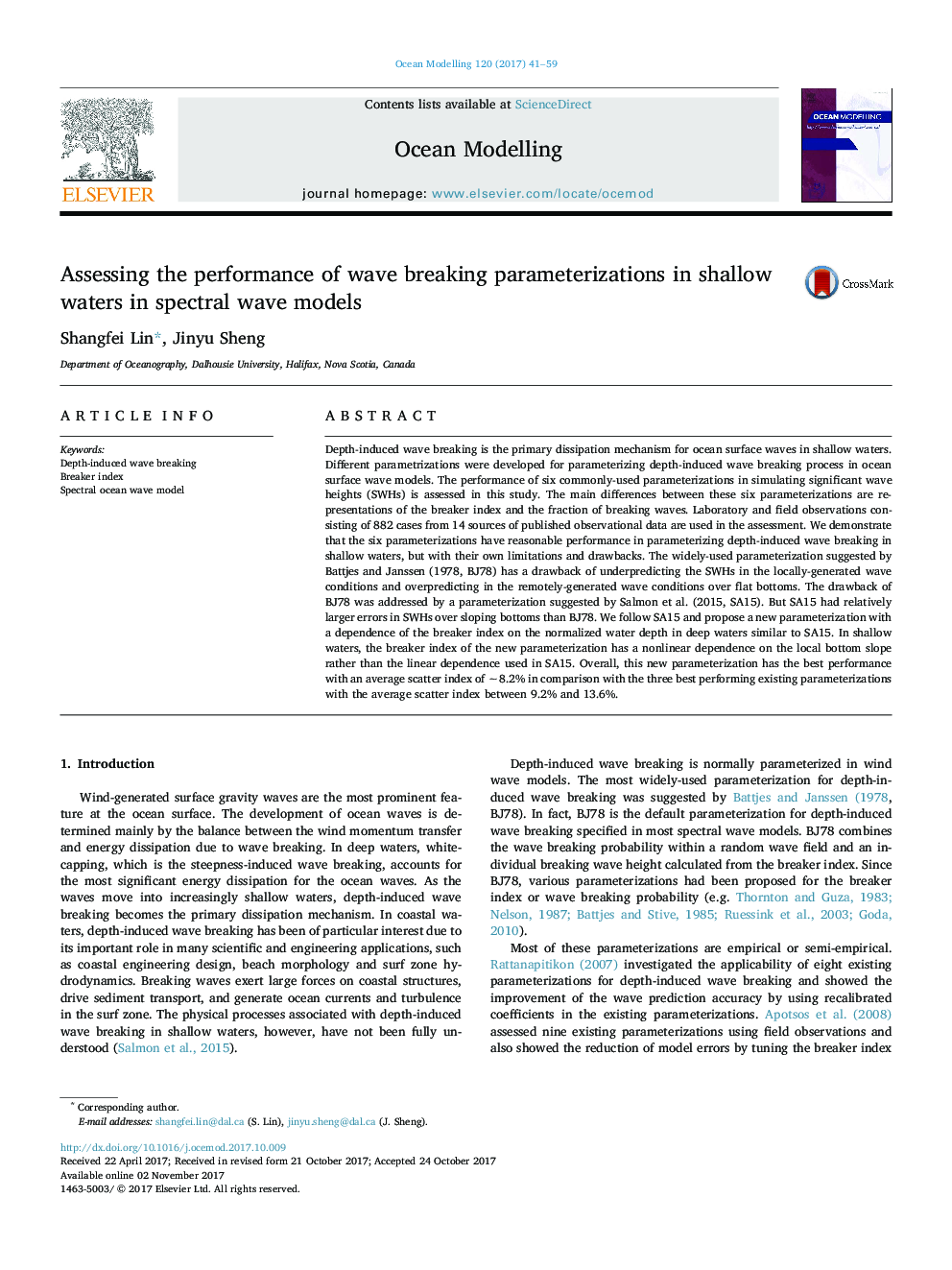| Article ID | Journal | Published Year | Pages | File Type |
|---|---|---|---|---|
| 8886554 | Ocean Modelling | 2017 | 19 Pages |
Abstract
Depth-induced wave breaking is the primary dissipation mechanism for ocean surface waves in shallow waters. Different parametrizations were developed for parameterizing depth-induced wave breaking process in ocean surface wave models. The performance of six commonly-used parameterizations in simulating significant wave heights (SWHs) is assessed in this study. The main differences between these six parameterizations are representations of the breaker index and the fraction of breaking waves. Laboratory and field observations consisting of 882 cases from 14 sources of published observational data are used in the assessment. We demonstrate that the six parameterizations have reasonable performance in parameterizing depth-induced wave breaking in shallow waters, but with their own limitations and drawbacks. The widely-used parameterization suggested by Battjes and Janssen (1978, BJ78) has a drawback of underpredicting the SWHs in the locally-generated wave conditions and overpredicting in the remotely-generated wave conditions over flat bottoms. The drawback of BJ78 was addressed by a parameterization suggested by Salmon et al. (2015, SA15). But SA15 had relatively larger errors in SWHs over sloping bottoms than BJ78. We follow SA15 and propose a new parameterization with a dependence of the breaker index on the normalized water depth in deep waters similar to SA15. In shallow waters, the breaker index of the new parameterization has a nonlinear dependence on the local bottom slope rather than the linear dependence used in SA15. Overall, this new parameterization has the best performance with an average scatter index of â¼8.2% in comparison with the three best performing existing parameterizations with the average scatter index between 9.2% and 13.6%.
Related Topics
Physical Sciences and Engineering
Earth and Planetary Sciences
Atmospheric Science
Authors
Shangfei Lin, Jinyu Sheng,
